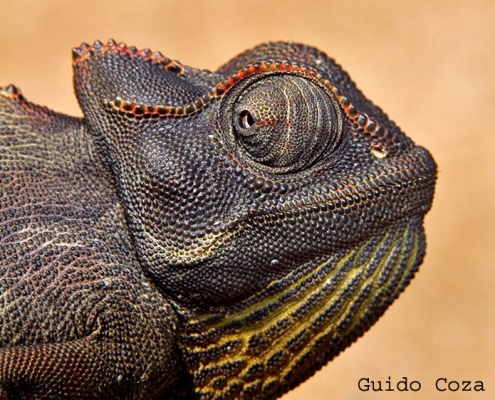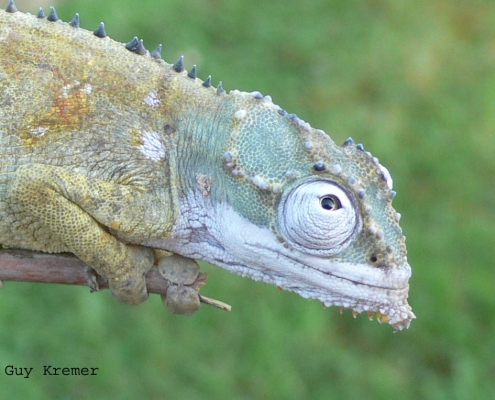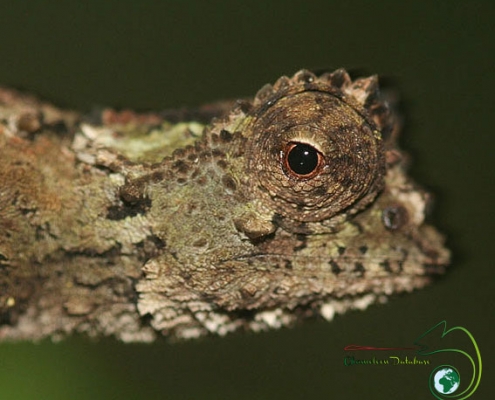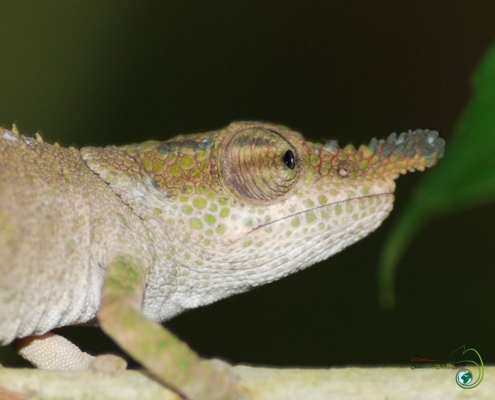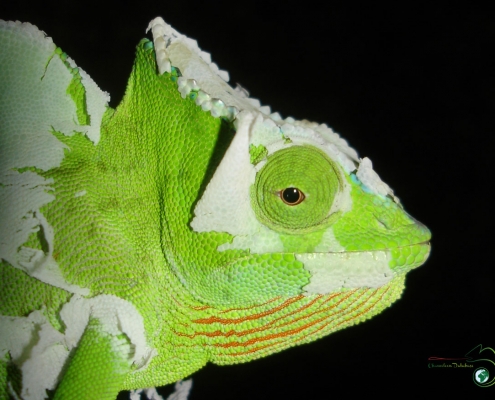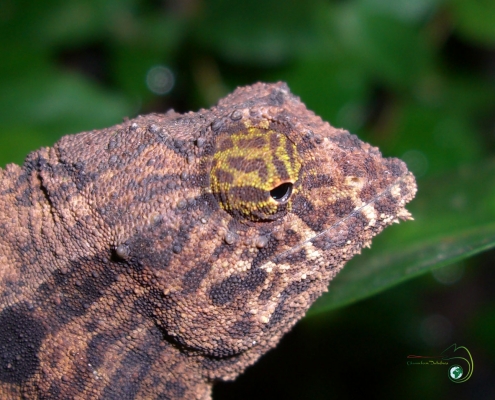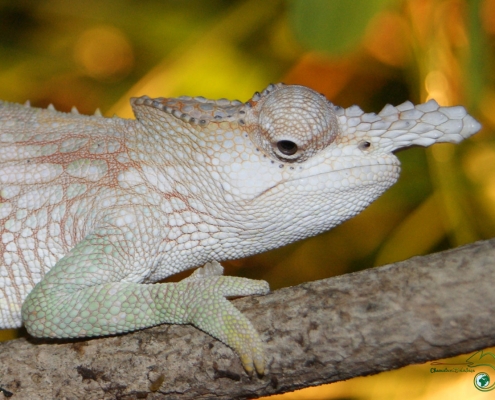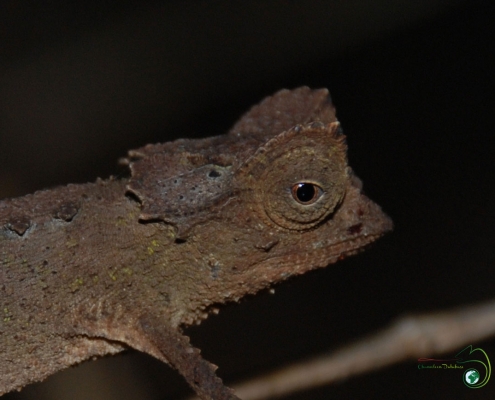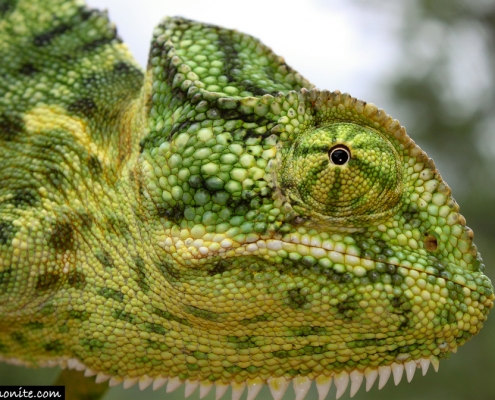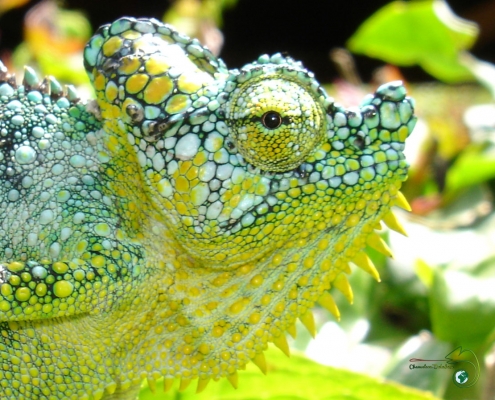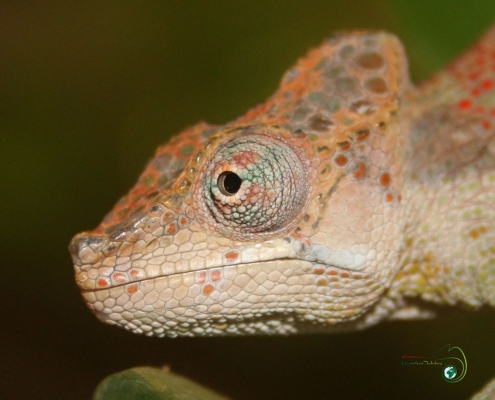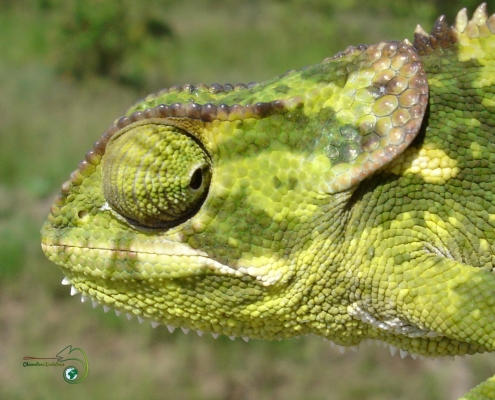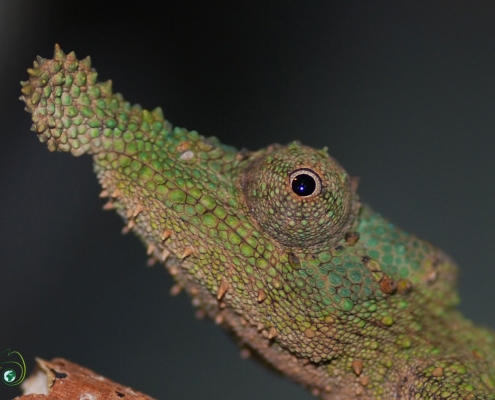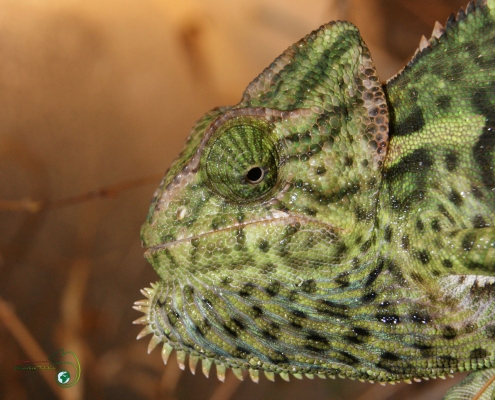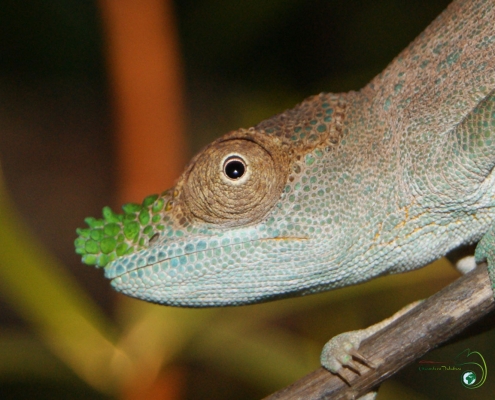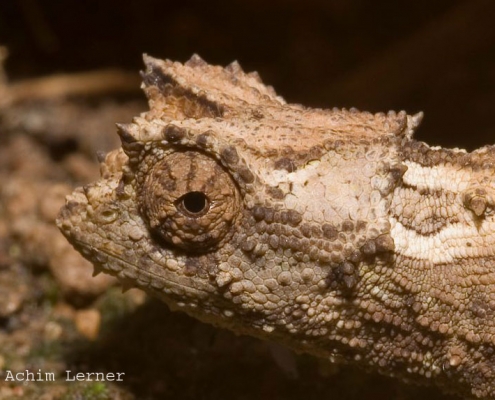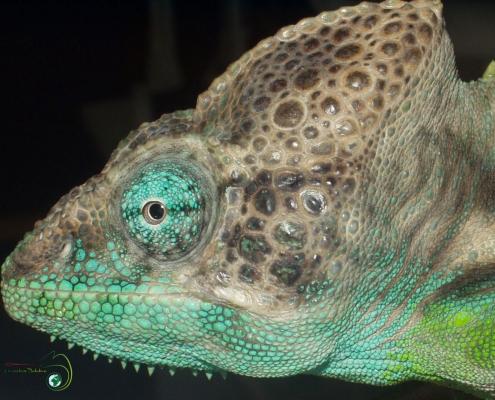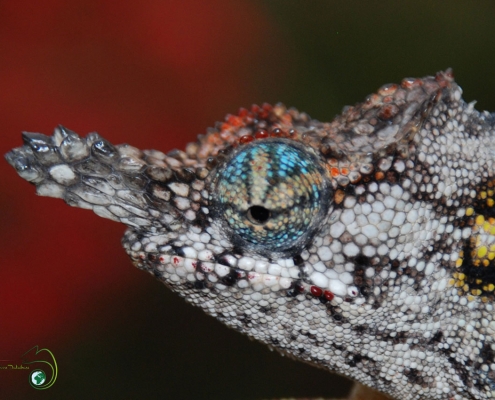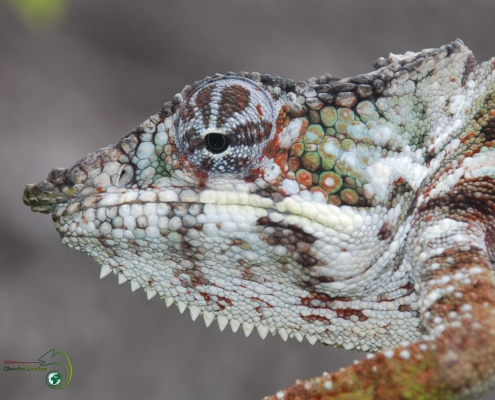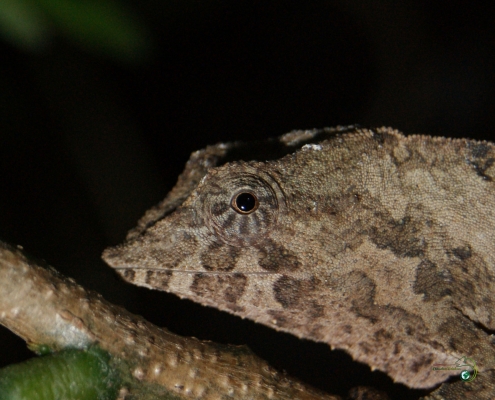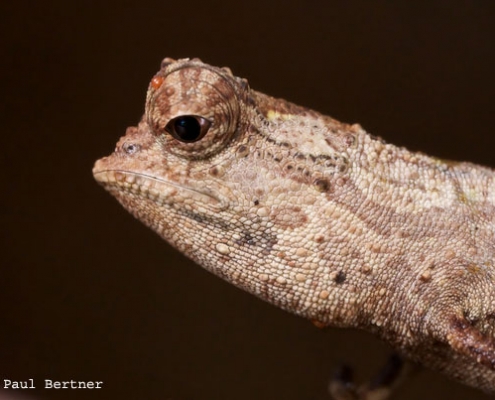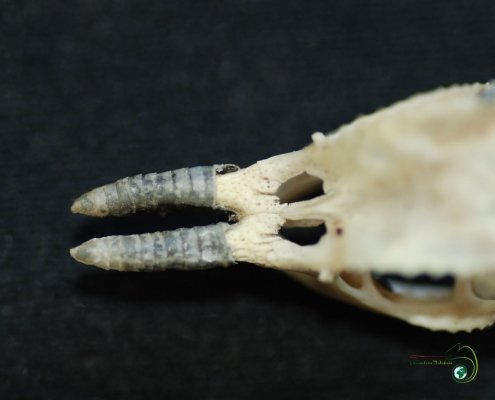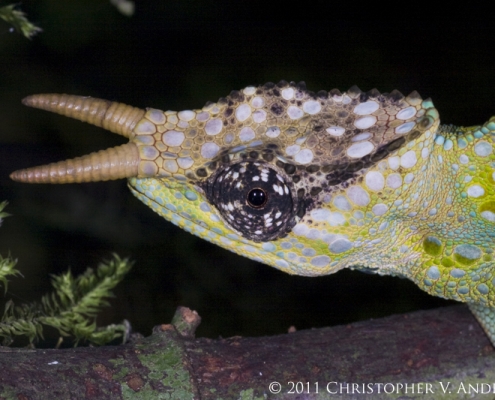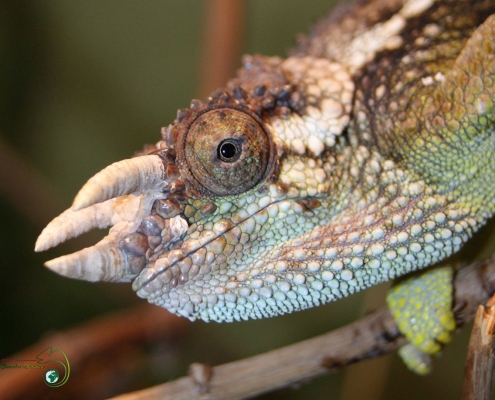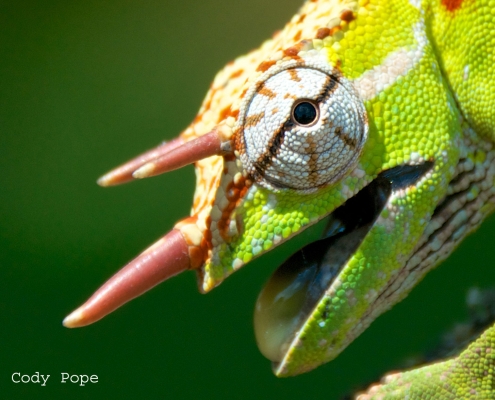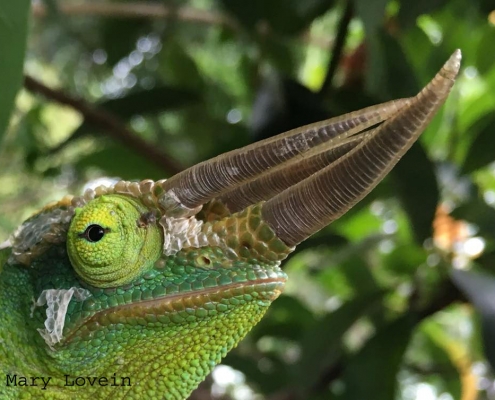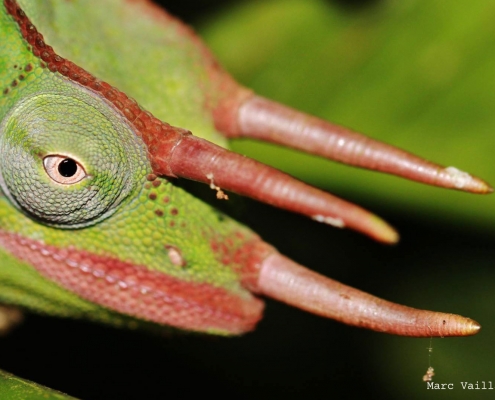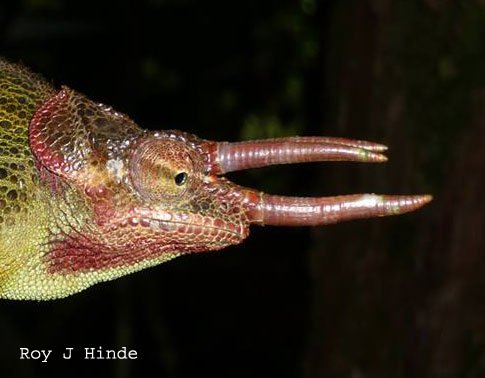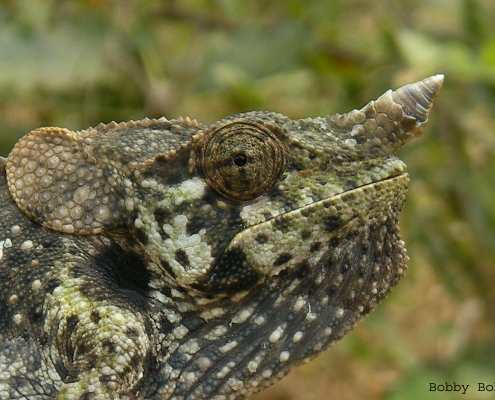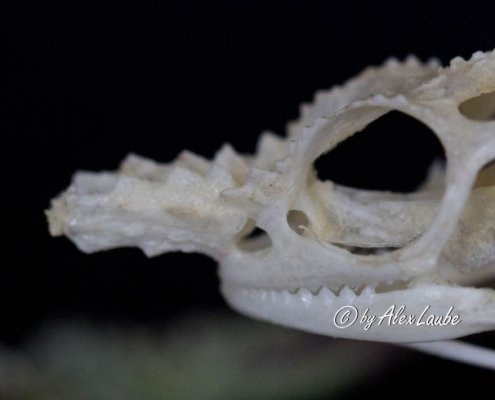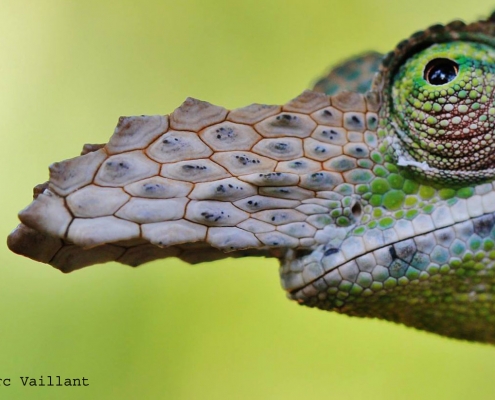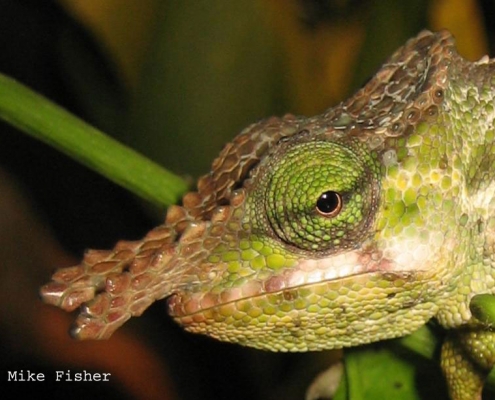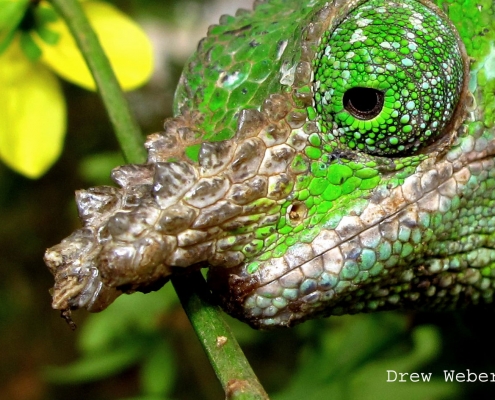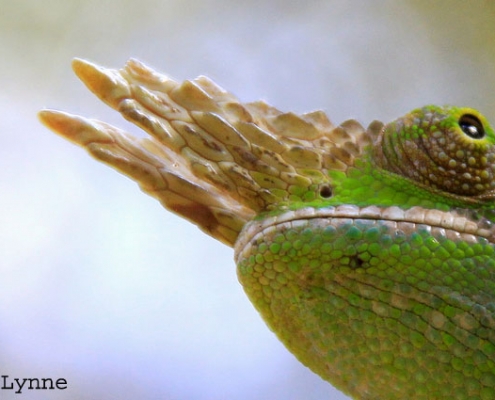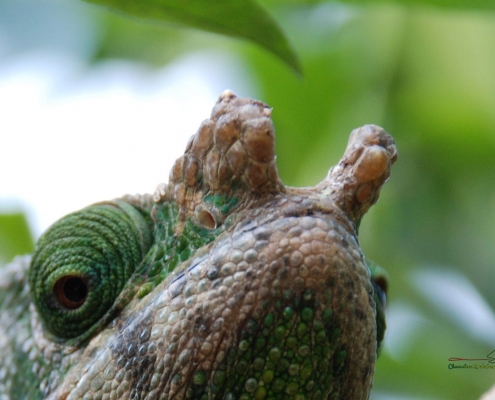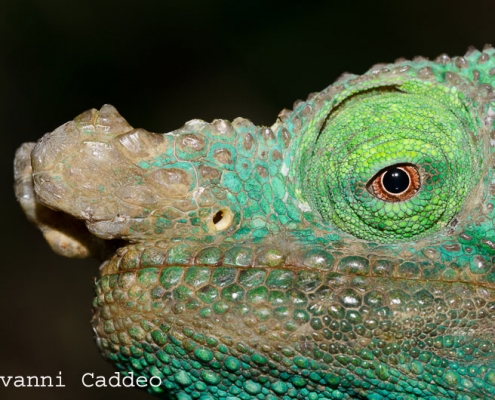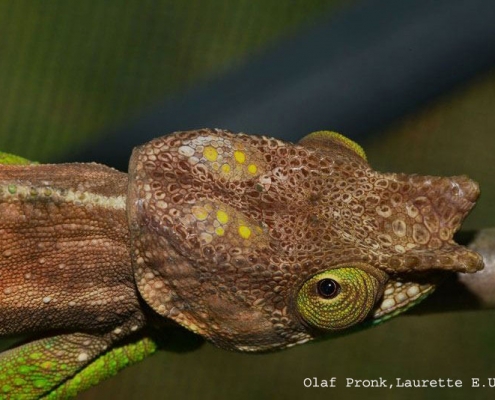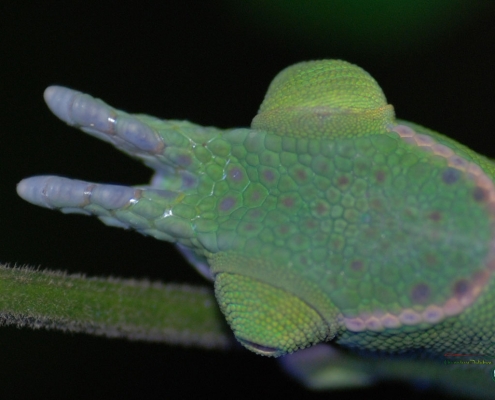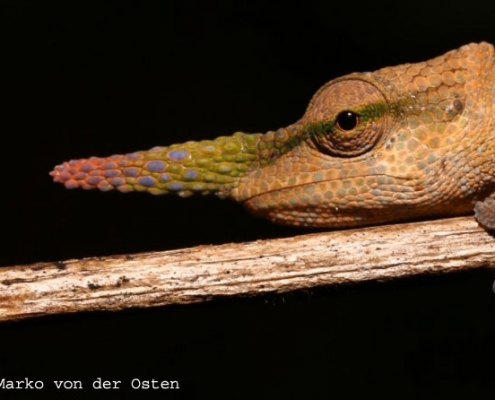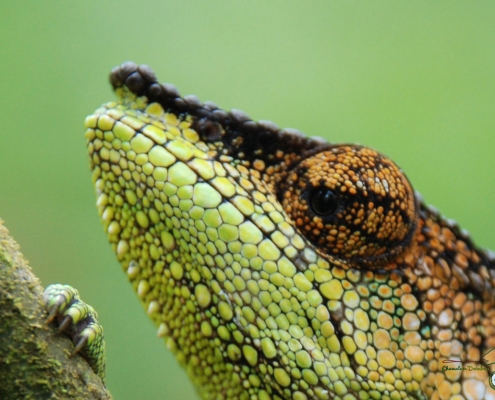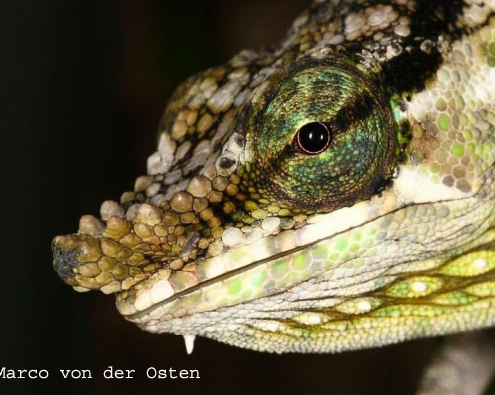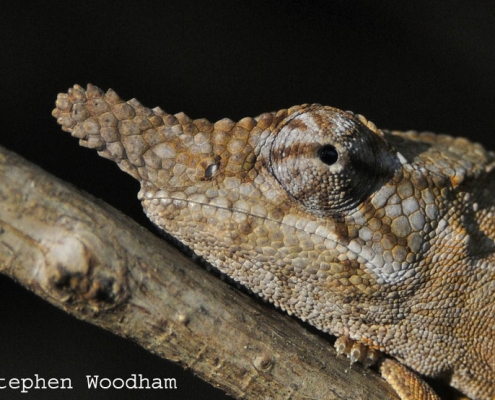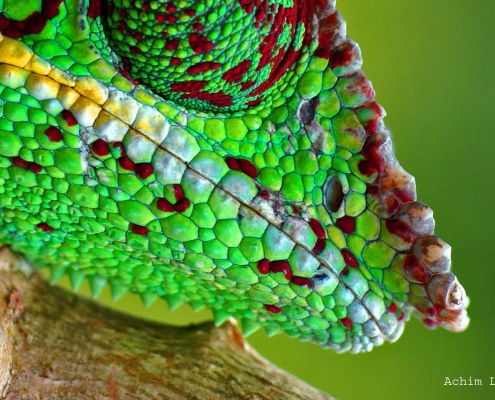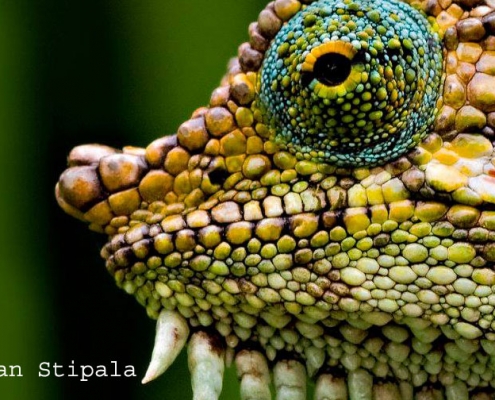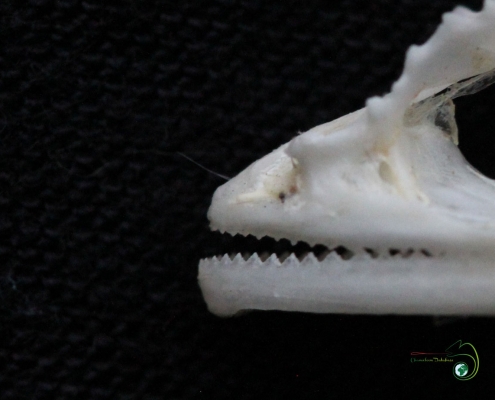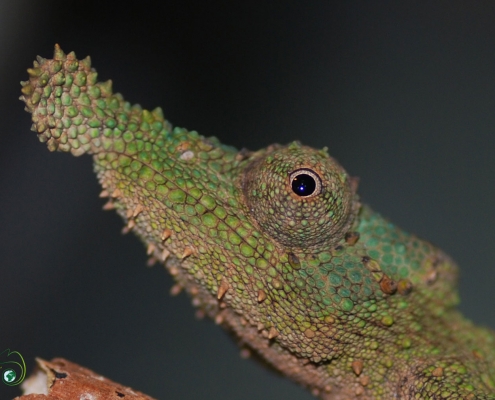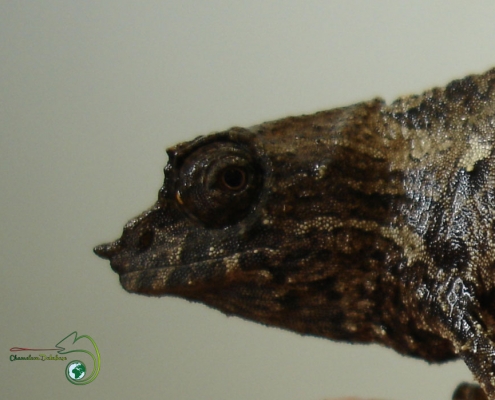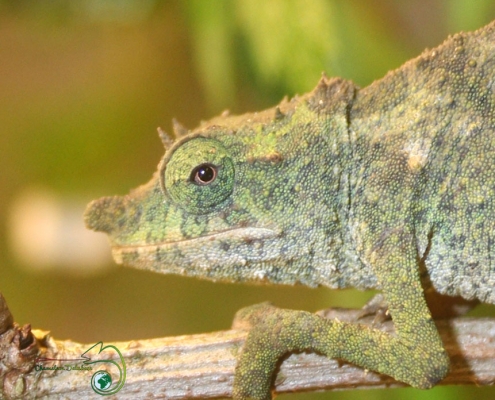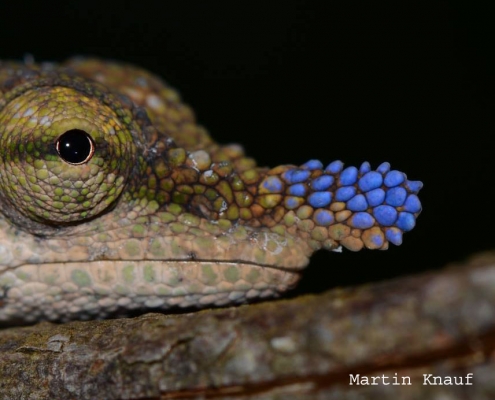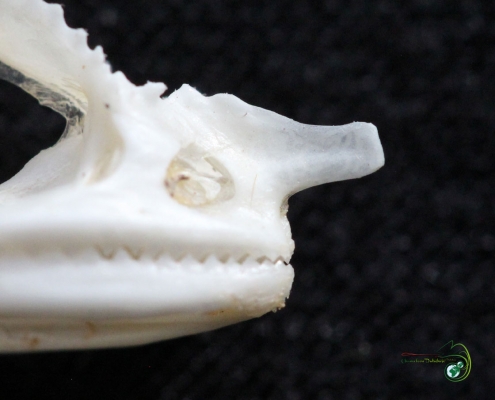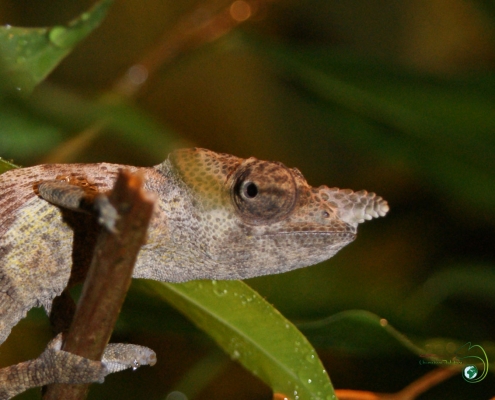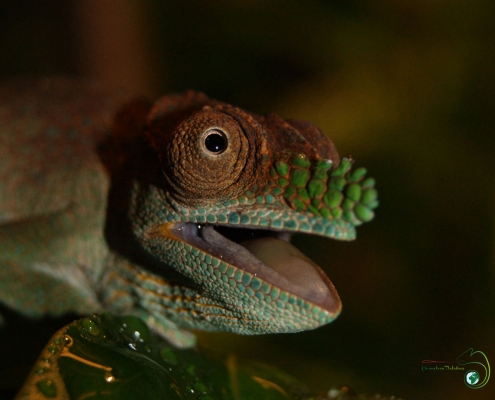Head shape and cranial protuberances
The head of a chameleon is quite variable, depending on the species and genus.
True horns:
True horns have a bony base and are covered by an annulated keratin sheath which is formed by a single hypertrophied scale.
The most familiar species with true horns is undoubtedly Trioceros jacksonii, but there are many other species that have evolved such horns, however such horns are only present within the genus Trioceros.
One exception is Trioceros conirostratus which has horns that are build by the keratin sheath of a hypertrophied scale but they lack a bony base completely.
False horns:
False horns vary in shape, but like true horns, they have a bony base, but in this case they are covered by larger tubercular or plate-like scales and not hypertrophied keratin shedding scale.
They are often paired and within some species these false horns are fused together and build one large flat horn (Kinyongia xenorhinum).
The most well-known species with false horns is probably, Kinyongia multituberculata, which is known for its long ‘nose’, but numerous other species have also developed false horns. Some species like Trioceros hoehnelii or Kinyongia carpenteri have single elevated rostral horn and in Brookesia false horns are present in form of superior nasal and ocular conical scales. False horns are found in the genera Brookesia, Calumma, Furcifer, Kinyongia, Palleon and in some Trioceros species.
Dermal protuberance:
This type of protuberance is made entirely of flexible scale covered skin. Dermal protuberances are often covered by granular scales and are found rostrally or preocularly in pairs. They are mostly present in Rhampholeon and smaller Calumma species.
Semipliant horns:
Semipliant horns are a composition of false and dermals horns. They have a flexible tip and a bony base and are found in Kinyongia oxyrhina and Kinyongia tenius.
Source:
Books:
Chamaeleonidae. By J.J Klaver & W.Böhme.
Chameleons Nature´s hidden jewles. By Petr Necas.
Chameleons of Africa. By Colin Tilbury.
Stump-tailed chameleons Miniature dragons of the rainforest. By Petr Necas.
The Biology of Chameleons. By Krystal A. Tolley & Anthony Herrel.
Publications:
ANANJEVA. N.B- 1991- the skin sense organs of some Iguanian lizards.
Picture copyright:
Achim Lerner
Alex Laube.
Bobby Bok.
Chameleondatabase.com
Christopher V. Anderson. Chamaeleonidae.com
Cody Pope.
Drew Weber.
Giovanni Caddeo.
Guido Coza.
Guy Kremer.
Jan Stipala.
Lynne.
Marc Vaillant.
Marco Von der Osten.
Martin Knauf.
Mary Lovein.
Mike Fisher.
Olaf Pronk.
Paul Bertner. Flickr.
Roy J. Hinde.
Stephen Woodham.
Edited by Paul Freed.

